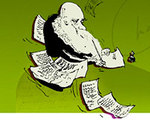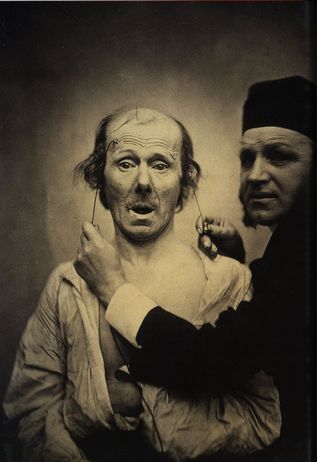Crowdsourcing Charles Darwin’s Experiment on Emotion
Published Oct-04-15Breakthrough:
A global crowdsourcing exercise recreates Charles Darwin’s experiment on the expression of emotion.
Company:
Darwin Correspondence Project, United Kingdom
The Story:
 In addition to his revolutionary work on evolution, Charles Darwin also busied himself with research in numerous other fields. One of his lesser-known experiments was on emotion. The great 19th-century naturalist wanted to prove that humans, like animals have an innate and universal set of emotions which allows us to understand each other’s feelings. This research featured in his 1872 tome 'The Expression of Emotion in Man and Animals'.
In addition to his revolutionary work on evolution, Charles Darwin also busied himself with research in numerous other fields. One of his lesser-known experiments was on emotion. The great 19th-century naturalist wanted to prove that humans, like animals have an innate and universal set of emotions which allows us to understand each other’s feelings. This research featured in his 1872 tome 'The Expression of Emotion in Man and Animals'.Dinner with Charles Darwin
His experiment took place over several dinner parties in the living room of Down House, his country home in Kent. The chances are, if you had been invited to be a dinner guest between March and November 1868, he would’ve asked you for your responses to photographs of an old, toothless man with his face frozen into a number a different poses.
The snaps were taken by French physician and physiologist, G. B. A. Duchenne who had applied electrical stimulation directly to the face of the man.
Darwin followed up his guests’ observations with a questionnaire that he distributed to his many correspondents around the world. He couldn't send out the photographs because they were valuable, and so he asked about facial expressions and gestures among different cultures.
Online Crowdsourcing Experiment
In 2011, the Darwin Correspondence Project, which is digitizing thousands of the scientist's letters, decided to recreate the emotion experiment in an online crowdsourcing experiment.
In the original research, Darwin asked each guest what emotions they thought the photographic subject was feeling. He then compiled their results in a table. Among his dinner guests, there was almost universal agreement on those photographs that betrayed, anger, fear, happiness, sadness and surprise.
The crowdsourced recreation featured an interactive online tool that used the same Duchenne photographs. In 1868, 23 English men, women and children gave their responses, while in 2011, 18,000 people took part from all over the world. They visited the website, looked at the 11 photographs and gave their interpretations.
Fascinating Results
The team behind the 2011 online exercise were not so much interested in the results as the process of taking part, experiencing what it was like to participate in an experiment in Darwin's day.
Both experiments are not considered to be particularly scientific by modern standards. Nonetheless, the 2011 results were broadly in line with what Darwin concluded.
For example:
There were diverse responses to each photograph, which reflects Darwin's conclusion that some artificially created expressions are more convincing at conveying emotion than others.
There was a greater range of responses to the more complex emotions. Many of them were conflicting interpretations. Again, this was in line with Darwin's findings.
The average response times ranged from 4 to 16 seconds. That participants didn't spend a long time studying the photos is in keeping with what Darwin said: "many shades of expression are instantly recognized without any conscious process of analysis on our part".
The full results of the crowdsourcing experiment can be seen at http://www.darwinproject.ac.uk/results-of-the-darwin-online-emotions-experiment.
Next Story »

